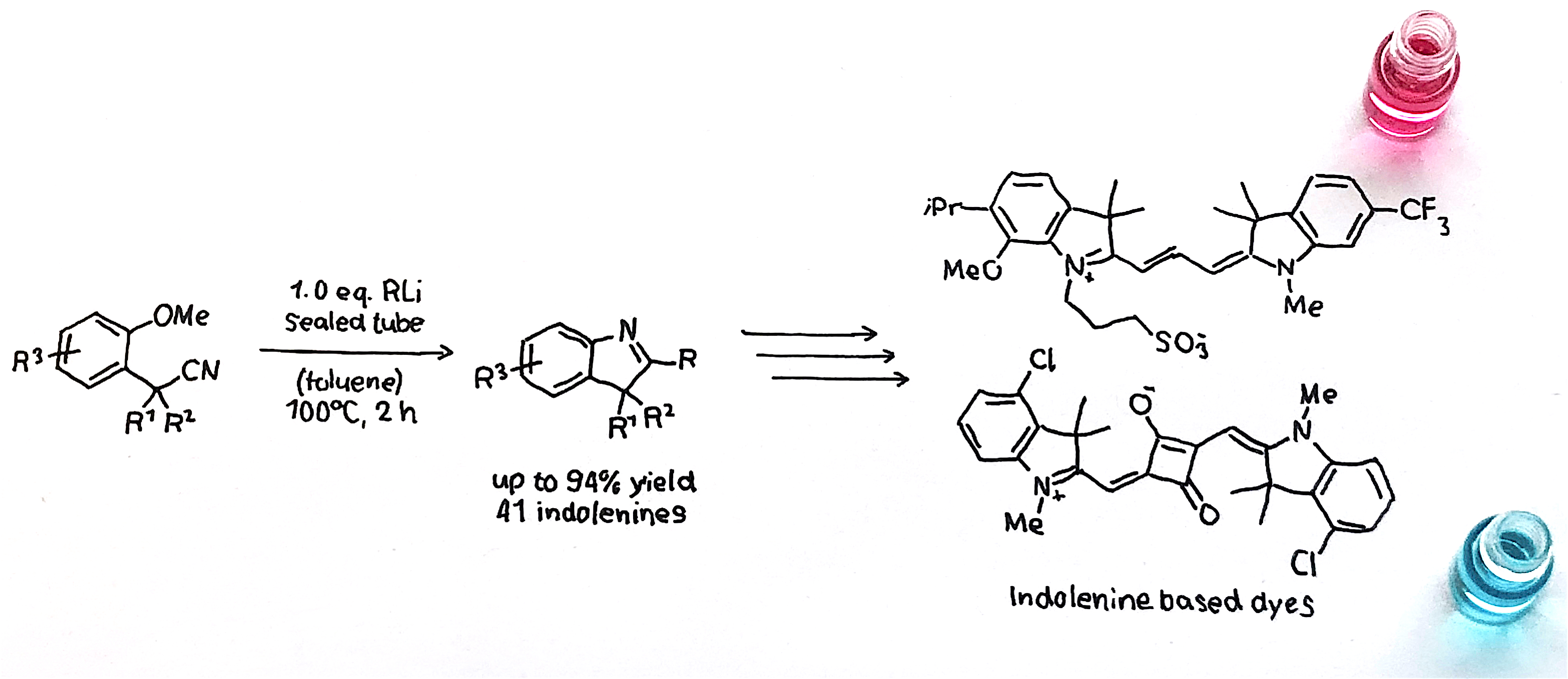Preparation of Indolenines via Nucleophilic Aromatic Substitution
The indole and indolenine core structure is a popular motive among many natural products.[1] Besides its use in natural product synthesis, indolenines are also used as precursors in the synthesis of indolenine based dyes that are employed in many differed fields such as in vivo and ex vivo imaging.[2] For the synthesis of indolenines the interrupted Fischer indolization is mostly used, which application is mainly limited to substitutions at the 5-position.[3] In this context, we have developed a new method for the preparation of indolenines via a nucleophilic aromatic substitution using easy accessible benzyl nitriles as starting materials.[4] This cyclization method is high yielding (up to 94%) and tolerates a wide range of different functional groups, which is exemplified by the substrate scope of 41 indolenines. Substitutions at all possible positions of the aromatic ring as well as electron rich and poor benzyl nitriles are well tolerated. Furthermore, we investigated the mechanism of the nucleophilic aromatic substitution reaction. Finally, we applied this new method for the synthesis new indolenine-based dyes, which are difficult to access with currently literature known procedures.

[1] Minoru Ishikura, Takumi Abe, Tominari Choshi, Satoshi Hibino, Nat. Prod. Rep. 2015, 32, 1389−1471.
[2] Mayeul Collot, Tkhe Kyong Fam, Pichandi Ashokkumar, Orestis Faklaris, Thierry Galli, Lydia Danglot, Andrey. S. Klymchenko, J. Am. Chem. Soc. 2018, 140, 5401−5411.
[3] Bernhard Witkop, J. B. Patrick, J. Am. Chem. Soc. 1951, 73, 1558–1564.
[4] Florian Huber*, Joel Roesslein*, Karl Gademann, Org. Lett. 2019, 21, 2560–2564.